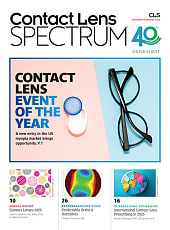
Optical retailers—from solo practitioners to large chain operators—have never been so challenged as they are in the face of the coronavirus pandemic.
Optical shops across the country are temporarily closing down to aid in reducing the spread of COVID-19 while other eyecare providers are remaining open to deliver critical care, keeping patients out of hospitals. Still others are turning to telehealth as a model for providing patient care in this critical moment.
We know you have many important questions to answer in this time of uncertainty.
Should you stay open, offer limited hours of operation, or close your doors temporarily? Will you choose to offer telehealth services to your patient base? How can you assist patients while also protecting their health and safety, as well as that of your staff, your family, and yourself?
Essential Protections
Though increasing numbers of ECPs are, indeed, closing temporarily, here’s some of what the Centers for Disease Control (CDC) and the American Optometric Association (AOA) say about key protections to take when you are open:
• Post signage about (and discuss with staff) proper hand hygiene, coughing/sneezing etiquette, and staying home when sick.
• Keep stocked with all supplies that your employees need, including hand sanitizer, virus-killing sanitizing wipes, and no-touch disposal receptacles.
• If an employee is confirmed to have COVID-19, notify staff of possible exposure, but try to maintain confidentiality as required by the Americans with Disabilities Act (ADA).
• Regularly disinfect EVERY surface, including everything from doorknobs to workstations and dispensing tables to exam equipment, and stock up on virus-killing disposable wipes so staff can do the same.
• Protection for the mouth, eyes, and nose for eyecare professionals when caring for all patients is recommended.
Creating a Plan
All of these steps should be part of an Infectious Disease Outbreak Plan. It may be something you never thought your business would need, but the time is now and the need is urgent.
To help you right now—as well as to help in creating a longer-term plan—the AOA has announced its support of the CDC’s Patient Care Guidance issued March 17.
In addition, the AOA’s Health Policy Institute states that optometrists should be proactive “and plan for basic contingencies, including cross-training key staff members so that one person’s absence won’t derail the practice,” as well as anticipate manufacturing disruptions and add inventory of necessary medical supplies.
The key to in-office protective protocols, suggests AOA President Barbara Horn O.D., is “vigilance and just using good hygiene—thorough handwashing, using gloves, disinfecting equipment, and other recommendations provided by the CDC.”
Additionally, the American Board of Opticianry (ABO) and the National Contact Lens Examiners (NCLE) have composed a guideline document of precautions that eyecare professionals should take. The National Academy of Opticianry has shared these guidelines with its members.
Critical Resources
As new cases of COVID-19 surface at an explosive rate across the U.S., regulations are changing constantly—and it’s critical to stay on top of the latest information.
Three key resources that you or your practice manager should be checking daily for updates are:
• The AOA COVID-19 web page.
• The CDC Coronavirus resource page.
• The Occupational Safety and Health Administration (OSHA) COVID-19 information web page.
Stay tuned at eyecarebusiness.com and EB’s Facebook page for critical information and stories from across the industry in the coming days and weeks.



